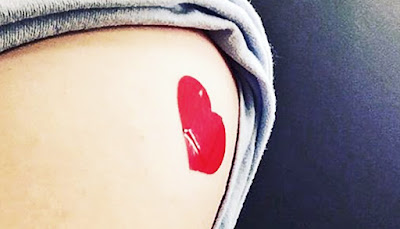IMMUNE CHECK-IN MAY LEAD TO A FLU VACCINE THAT LASTS
{Scientists} have developed {a brand-new} approach to {evaluate|examine|analyze} whether a {influenza} {injection|vaccination} activates the {type} of immune cells needed for long-lasting {resistance}.
Using this {method|strategy}, the {scientists} {revealed} that the {influenza} {injection|vaccination} {can} eliciting antibodies that protect {versus} {a wide} range of {influenza} {infections}, at {the very least} in some {individuals}.
pemecatan valverde adalah barcelona musim-ini
Their {searchings for} could aid {initiatives} to design an improved {influenza} {injection|vaccination} that provides protection not {just} {versus} old influenza {infections} but also new ones.
{Influenza} {period} {happens|occurs} {such as} clockwork every year, and {eventually|one way or another} {everybody|every person} {obtains} {contaminated}. The {yearly} {influenza} {fired} is a key {component} of public {health and wellness|wellness} {initiatives} to control the {influenza}, but the vaccine's effectiveness is {infamously} {bad|inadequate}, {dropping} {someplace} from 40% to 60% in {a common|a normal|a regular} year.
{An expanding} body of {proof} {recommends} that {a background} of {direct exposure} to influenza {infection} might {weaken|threaten} the effectiveness of the {yearly} {influenza} {injection|vaccination}. Partial {resistance} developed {throughout} {previous} {influenza} seasons—either through {all-natural} infection or vaccination—might {disrupt|hinder} the body's {reaction|action|feedback} to {a brand-new} {injection|vaccination}, such that {inoculation} mainly boosts the {acknowledgment} of {previous} influenza {stress|pressures} but does little to {produce|develop} the ability {to combat|to eliminate} new {stress|pressures}.
"Every year, about {fifty percent} of the US adult {populace} {obtains} vaccinated {versus} influenza," says {elderly} {writer} Ali Ellebedy, {aide} {teacher} of pathology and immunology at Washington {College} in St. Louis.
"{It is} necessary for public {health and wellness|wellness}, but {it is} also {extremely|exceptionally|unbelievably} expensive and {ineffective}. What we need is a one-and-done influenza {fired}, but we are not there yet. Anything that helps us understand how {resistance} {establishes|creates} in the context of {previous} exposures {would certainly} {be essential|be very important|be necessary} as we try {to earn|making} a better {injection|vaccination}."
GETTING THE IMMUNE SYSTEM UP TO DATE
The key to long-lasting {resistance} {exists} in lymph nodes, minuscule {body organs} of the {body immune system} positioned throughout the body. Easy to {miss out on} in {healthy and balanced} {individuals}, lymph nodes become swollen and tender {throughout} an infection as immune cells busily {communicate|engage|connect} and {increase} within them.
The {very first time} {an individual} is {subjected|revealed} to a virus—either by infection or vaccination—immune cells {catch|record} the {infection} and bring it to the nearest lymph node. There, the {infection} {exists} to {supposed} naïve B cells, {triggering|creating} them to {fully grown} and {begin|beginning} {creating|generating} antibodies {to combat|to eliminate} the infection. Once the {infection} is {effectively|efficiently} routed, most of the immune cells that {participate in} the {fight} {pass away} off, but {a couple of} {proceed} {distributing|flowing} in the blood as long-lived memory B cells.
The second time {an individual} is {subjected|revealed} to {an infection}, memory B cells quickly reactivate and {begin|beginning} {creating|generating} antibodies again, bypassing naive B cells. This {fast|quick} {reaction|action|feedback} quickly {develops|constructs} protection for {individuals} {that} have been re-infected with the exact same strain of {infection}, but {it is} not ideal for {individuals} {that} have received a {injection|vaccination} designed to {develop|construct} {resistance} {versus} {a somewhat} {various} strain, as in the {yearly} {influenza} {injection|vaccination}.
"If our influenza {injection|vaccination} targets memory cells, those cells will {react to|reply to} the {components} of the {infection} that {have not} changed from previous influenza {stress|pressures}," Ellebedy says. "Our {objective} is {to obtain} our {body immune system} up {to this day} with the new {stress|pressures} of influenza, which means we want to focus the immune {reaction|action|feedback} on the {components} of the {infection} that are {various} this year."



